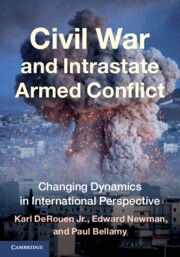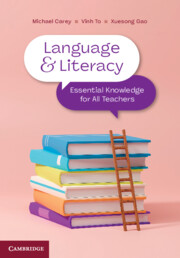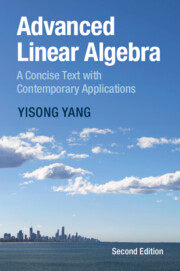Refine search
Actions for selected content:
37953 results in Cambridge Textbooks
Part 4 - Developing professional practice
-
- Book:
- Introduction to Education
- Published online:
- 14 June 2025
- Print publication:
- 02 June 2025, pp 339-391
-
- Chapter
- Export citation
Preface
-
- Book:
- Introduction to Education
- Published online:
- 14 June 2025
- Print publication:
- 02 June 2025, pp xi-xii
-
- Chapter
- Export citation
Part 2 - Understanding learning and understanding teaching
-
- Book:
- Introduction to Education
- Published online:
- 14 June 2025
- Print publication:
- 02 June 2025, pp 107-286
-
- Chapter
- Export citation
Part 3 - Working in education contexts
-
- Book:
- Introduction to Education
- Published online:
- 14 June 2025
- Print publication:
- 02 June 2025, pp 287-338
-
- Chapter
- Export citation
Chapter 12 - How do I work with colleagues, parents/caregivers and the community?
- from Part 3 - Working in education contexts
-
-
- Book:
- Introduction to Education
- Published online:
- 14 June 2025
- Print publication:
- 02 June 2025, pp 315-338
-
- Chapter
- Export citation
Contents
-
- Book:
- Introduction to Education
- Published online:
- 14 June 2025
- Print publication:
- 02 June 2025, pp v-x
-
- Chapter
- Export citation
Copyright page
-
- Book:
- Introduction to Education
- Published online:
- 14 June 2025
- Print publication:
- 02 June 2025, pp iv-iv
-
- Chapter
- Export citation
Index
-
- Book:
- Introduction to Education
- Published online:
- 14 June 2025
- Print publication:
- 02 June 2025, pp 392-396
-
- Chapter
- Export citation

Civil War and Intrastate Armed Conflict
- Changing Dynamics in International Perspective
-
- Published online:
- 29 May 2025
- Print publication:
- 12 June 2025
-
- Textbook
- Export citation

Language and Literacy
- Essential Knowledge for All Teachers
-
- Published online:
- 29 May 2025
- Print publication:
- 12 June 2025
-
- Textbook
- Export citation

Introduction to Epidemiology for the Health Sciences
-
- Published online:
- 28 May 2025
- Print publication:
- 24 April 2025
-
- Textbook
- Export citation

Advanced Linear Algebra
- A Concise Text with Contemporary Applications
-
- Published online:
- 27 May 2025
- Print publication:
- 12 June 2025
-
- Textbook
- Export citation
Copyright page
-
- Book:
- Introducing Translation
- Published online:
- 29 April 2025
- Print publication:
- 22 May 2025, pp iv-iv
-
- Chapter
- Export citation
Contents
-
- Book:
- Neuroscience of Attention
- Published online:
- 02 May 2025
- Print publication:
- 22 May 2025, pp vii-xi
-
- Chapter
- Export citation
Chapter 8 - Fracture: Microscopic Aspects
-
- Book:
- Mechanical Behavior of Materials
- Published online:
- 31 October 2025
- Print publication:
- 22 May 2025, pp 532-597
-
- Chapter
- Export citation
1 - What We Can Know about Translation and How We Can Come to Know It
-
- Book:
- Introducing Translation
- Published online:
- 29 April 2025
- Print publication:
- 22 May 2025, pp 4-26
-
- Chapter
- Export citation
Preface
-
- Book:
- Introducing Translation
- Published online:
- 29 April 2025
- Print publication:
- 22 May 2025, pp ix-x
-
- Chapter
- Export citation
5 - The Effects of Attention on Neural Processing
-
- Book:
- Neuroscience of Attention
- Published online:
- 02 May 2025
- Print publication:
- 22 May 2025, pp 123-166
-
- Chapter
- Export citation
2 - Attention in Everyday Life
-
- Book:
- Neuroscience of Attention
- Published online:
- 02 May 2025
- Print publication:
- 22 May 2025, pp 32-57
-
- Chapter
- Export citation
Glossary
-
- Book:
- Neuroscience of Attention
- Published online:
- 02 May 2025
- Print publication:
- 22 May 2025, pp 349-356
-
- Chapter
- Export citation
